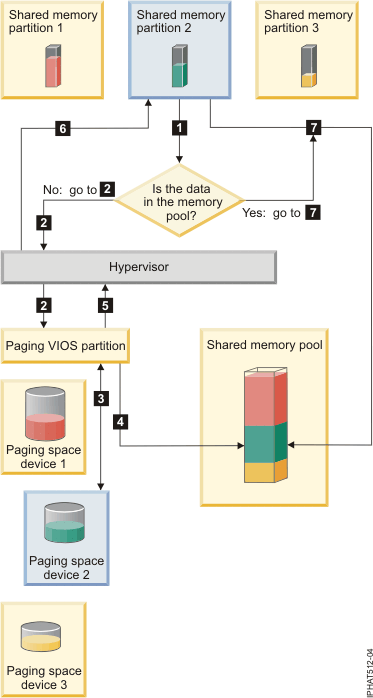When the operating system that runs in a logical partition that uses shared memory (hereafter referred to as a shared memory partition) needs to access data, the data must reside in the shared memory pool. Systems with overcommitted memory configurations require the hypervisor and at least one Virtual I/O Server (VIOS) logical partition that is assigned to the shared memory pool (hereafter referred to as paging VIOS partition) to move data between the shared memory pool and the paging space devices as needed.
In a shared memory configuration that is physically overcommitted (where the sum of the logical memory that is currently used by all the shared memory partitions is greater than the amount of memory in the shared memory pool), the hypervisor stores some of the logical memory that belongs to a shared memory partition in the shared memory pool and some of the logical memory in a paging space device. In order for the operating system in a shared memory partition to access its memory, the memory must be in the shared memory pool. Thus, when the operating system needs to access data that is stored on the paging space device, the hypervisor works with a paging VIOS partition to move the data from the paging space device to the shared memory pool so that the operating system can access it.
The following figure shows the data flow for shared memory.

In general, the data flows as follows: